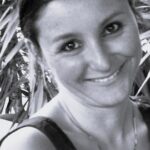Link to Pubmed [PMID] – 26572861
Link to DOI – 10.1186/s12879-015-1217-0
BMC Infect Dis 2015 Nov; 15(): 524
Non-B subtypes account for at least 50 % of HIV-1 infections diagnosed in Belgium and Luxembourg. They are considered to be acquired through heterosexual contacts and infect primarily individuals of foreign origin. Information on the extent to which non-B subtypes spread to the local population is incomplete.Pol and env gene sequences were collected from 410 non-subtype B infections. Profound subtyping was performed using 5 subtyping tools and sequences of both pol and env. Demographic information, disease markers (viral load, CD4 count) and viral characteristics (co-receptor tropism) were compared between subtypes. Maximum likelihood phylogenetic trees were constructed and examined for clustering.The majority of non-B infections were diagnosed in patients originating from Africa (55.8 %), individuals born in Western Europe represented 30.5 %. Heterosexual transmission was the most frequently reported transmission route (79.9 %), MSM transmission accounted for 12.2 % and was significantly more frequently reported for Western Europeans (25.7 % versus 4.3 % for individuals originating from other regions; p < 0.001). Subtypes A and C and the circulating recombinant forms CRF01_AE and CRF02_AG were the most represented and were included in the comparative analysis. Native Western Europeans were underrepresented for subtype A (14.5 %) and overrepresented for CRF01_AE (38.6 %). The frequency of MSM transmission was the highest for CRF01_AE (18.2 %) and the lowest for subtype A (0 %). No differences in age, gender, viral load or CD4 count were observed. Prevalence of CXCR4-use differed between subtypes but largely depended on the tropism prediction algorithm applied. Indications for novel intersubtype recombinants were found in 20 patients (6.3 %). Phylogenetic analysis revealed only few and small clusters of local transmission but could document one cluster of CRF02_AG transmission among Belgian MSM.The extent to which non-B subtypes spread in the native Belgian-Luxembourg population is higher than expected, with 30.5 % of the non-B infections diagnosed in native Western Europeans. These infections resulted from hetero- as well as homosexual transmission. Introduction of non-B variants in the local high at risk population of MSM may lead to new sub-epidemics and/or increased genetic variability and is an evolution that needs to be closely monitored.
